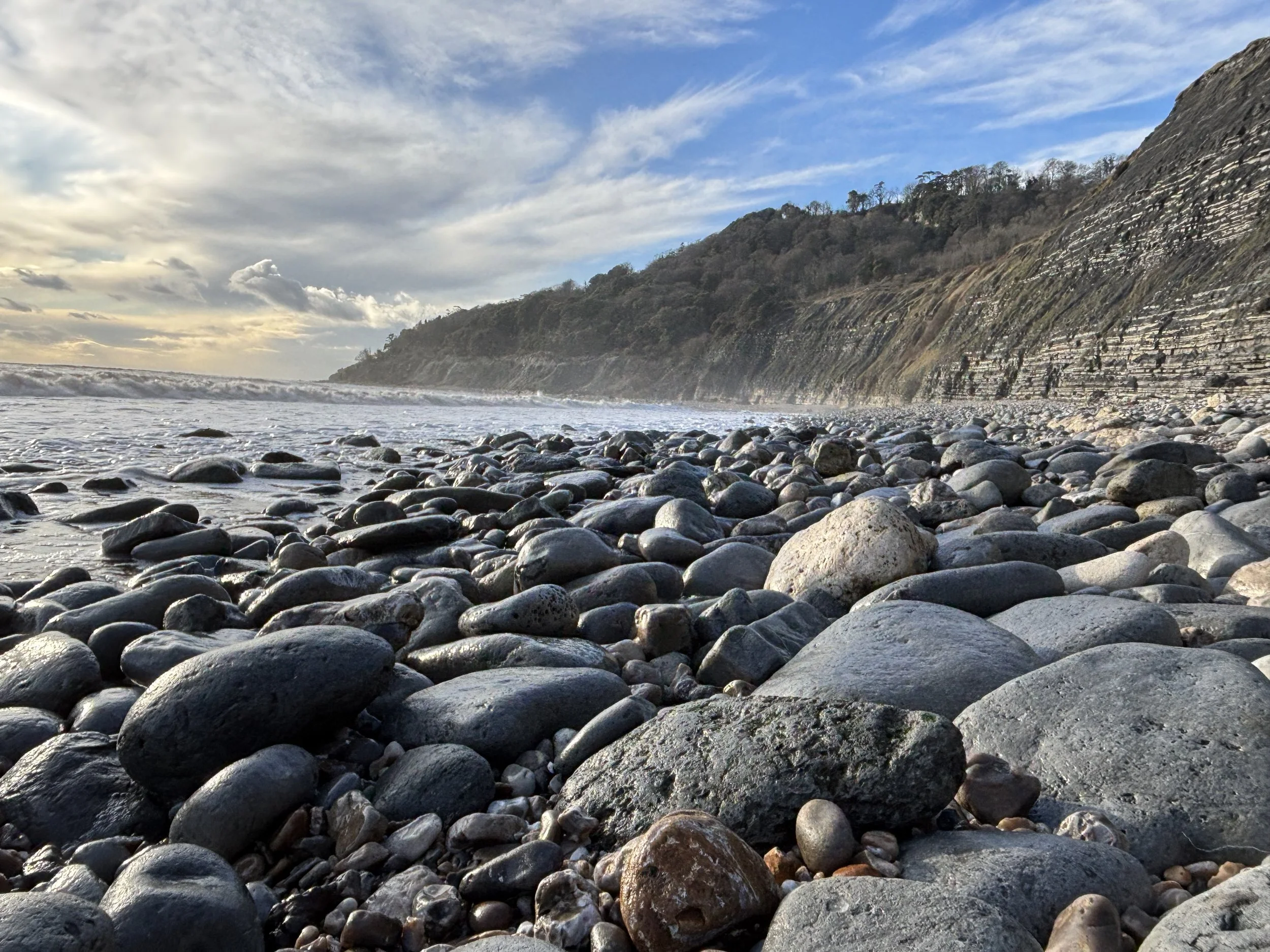
The Process
There is a story behind every fossil, from collection to display. Learn about the various steps: from Start to Finish…
Finding the Fossils
Winter is the best time to find and collect fossils on the Jurassic Coast, where storms frequently batter the coastline, eroding the landslides and cliff bases, revealing new fossils to find.
It can often be a battle against the elements to try and save these ancient relicts before the constant attrition of the beach system grinds them down into tiny particles and returns the fossils to the sea where they were once fossilised millions of years ago.
Stormy seas erode the landslides and are the best conditions for finding fossils on the Jurassic Coast.
Often times, very little of the fossil is visible on the beach, if it all, and it is a case of spotting stones from layers that are known for containing quality fossils. This is learnt through countless hours on the beach and lots of trial and error! These stones can either be broken down to reveal a fossil on the beach, or for a variety of reasons, if a stone looks promising, it’ll be taken off whole and investigated back at the workshop.
It is often cold, muddy and physically tough work, with stones weighing over 100kg occasionally being put in a backpack and carried off the beach, but it can be extremely rewarding, especially when you come away with an amazing piece of natural history and knowing that you are the first person to ever see it.
A large xipheroceras ammonite partially revealed by the tap of a hammer. This stone was carried off the beach as seen and taken back to the workshop.
An asteroceras obtusum ammonite in the evening sun, as found on the beach, after splitting a promising looking stone with a hammer.
Fossil Preparation
After finding the fossils out in the elements, they are brought back to our workshop, where they undergo meticulous preparation, using high-precision tools to slowly chip away the rock. The fossils are given a new life, and are exposed to the light of day for the first time in nearly 200 million years.
A promicroceras ammonite revealed for the first time in 196 million years, prepared in the workshop.
It can take hundreds of hours in some cases to prepare a single fossil, depending on it’s size, complexity and fragility. Various techniques are used to reveal them, although the main techniques centre around pneumatic tools like air scribes and air abrasives. Each rock depending on it’s location and composition reacts differently to different methods, so understanding which techniques work best for each rock type is important when attempting to prepare the fossil within, as the fossils tend to be extremely fragile, and can be easily damaged if the wrong techniques are used and enough care isn’t taken.
Air scribe in action
Whilst revealing the fossil itself can take many hours, sculpting the rock around it can often take just as long. Much thought goes into this, and it is an important part of the process, as the way the rock is sculpted around the fossil is an important aspect in the overall aesthetic and can really improve the overall finish.
Once the preparation is finished, the fossils can be displayed and are given a new life for the first time in nearly 200 million years, when much of England was under a subtropical sea, where plesiosaurs and ichthyosaurs hunted, and pterosaurs roamed the skies above, scanning for fish in the water below.


